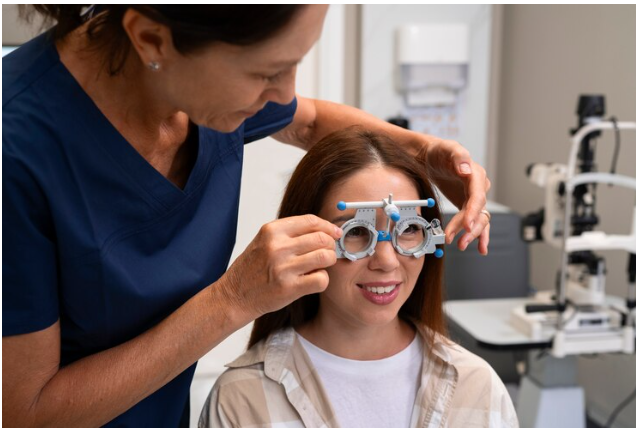Financial Assistance for Macular Degeneration
The financial burden associated with treating macular degeneration can be overwhelming for many patients and their families. From regular eye exams to advanced treatments like injections and medications, the costs can quickly add up, creating a significant barrier to accessing essential care. However, financial assistance programs are available to help mitigate these expenses, ensuring that individuals receive the necessary treatments without the added stress of financial strain.
This blog explores various avenues for financial assistance, including patient assistance programs, government initiatives, and potential disability benefits. By understanding these options, patients and their families can better navigate the financial challenges of macular degeneration treatment, enabling them to focus on managing their eye health and improving their quality of life.
Understanding Treatment Costs
The cost of treating macular degeneration varies significantly depending on the type and severity of the condition, as well as the chosen treatment method. Common treatments include anti-VEGF injections, which help reduce abnormal blood vessel growth in the retina and prevent further vision loss. These injections, often required monthly or bimonthly, can be quite expensive, with each injection costing several thousand dollars. Even with insurance coverage, patients may face high co-pays, deductibles, and other out-of-pocket expenses.
In addition to injections, other treatments such as laser therapy and photodynamic therapy are available. These treatments, while effective, also come with substantial costs that can quickly accumulate. Medications used to manage the symptoms and progression of macular degeneration, such as vitamins and supplements specifically formulated for eye health, add another layer of financial burden. Furthermore, regular eye examinations and imaging tests like optical coherence tomography (OCT) are essential for monitoring the disease, contributing to the overall cost of managing macular degeneration.
Understanding these potential expenses is crucial for patients and their families as they plan for the long-term management of the condition. By being aware of the financial implications of different treatment options, individuals can seek appropriate financial assistance and support to alleviate some of the economic pressures associated with macular degeneration care.
Options for Financial Assistance
Financial assistance programs play a vital role in helping patients manage the costs associated with macular degeneration treatment. One of the most accessible forms of assistance comes from Patient Assistance Programs (PAPs). These programs, typically sponsored by pharmaceutical companies, provide medications and treatments at reduced or no cost to eligible patients. Prominent PAPs supporting macular degeneration treatment include the Patient Access Network Foundation (PAN) and The Chronic Disease Fund (CDF). Eligibility criteria for these programs often consider factors such as income level, insurance status, and specific medical needs. Application processes are generally straightforward, and resources are available to guide patients through the steps.
Government programs also offer significant financial support for macular degeneration treatment. Medicare and Medicaid are two primary sources of assistance in the United States, providing coverage for many treatment options, including injections, medications, and necessary eye exams. Medicare Part B, for example, covers certain injectable drugs administered by a physician, which can significantly reduce out-of-pocket expenses for eligible seniors. Additionally, programs like EyeCare America provide comprehensive eye exams and care for eligible seniors at no cost, ensuring that financial constraints do not hinder access to essential eye health services.
For patients whose macular degeneration severely impacts their ability to work, disability benefits may be an option. The Social Security Administration (SSA) recognizes macular degeneration as a qualifying condition for disability benefits in certain cases. To be eligible, individuals must demonstrate that their condition significantly impairs their ability to perform substantial gainful activity. The application process for disability benefits involves providing comprehensive medical documentation and may require a detailed assessment of the individual's functional limitations.
By exploring these financial assistance options, patients can find the support they need to manage the costs associated with macular degeneration treatment, ensuring they receive the necessary care without the added burden of financial stress.
Ensuring Access to Essential Care Through Financial Assistance
Navigating the financial challenges of macular degeneration treatment can be daunting, but numerous resources are available to help patients and their families manage these expenses. From Patient Assistance Programs and government initiatives to disability benefits, various options can alleviate the financial burden and ensure access to essential care.
Visible Genomics is committed to supporting patients through every step of their journey, providing valuable information and resources to help them find the financial assistance they need. By leveraging these programs and understanding the available support, individuals can focus on their health and well-being, confident that financial barriers will not impede their access to necessary treatments. As advancements in macular degeneration treatment continue to evolve, ongoing education and awareness about financial assistance options remain crucial for improving patient outcomes and quality of life.

